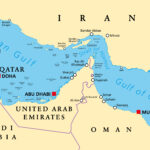With thousands displaced due to massive flooding in Louisiana and too many other similar incidences, it is time to reexamine the flood insurance landscape. Unfortunately, many caught up in this disaster did not have flood insurance – which is a tragedy in and of itself. Adding to the misfortune is the fact that for Louisiana victims who have flood insurance from the National Flood Insurance Program (NFIP), their coverage will prove to be inadequate for their needs.
The current system of nationalized flood insurance has proven disastrous – in fact, it is a $23 billion, and counting, travesty. The NFIP is a monopoly, which has simply not been held accountable for its actions.
The National Association of Insurance Commissioners, along with many others, is working to persuade Congress to make changes that will deliver private market solutions to American flood insurance buyers. Our view differs from their recent comments on this subject in only a few instances. For example, because the NFIP is currently a monopoly, the reauthorization period applicable to the NFIP should not be extended for a period that is longer than three years. Unfortunately, the NFIP has demonstrated an inclination to respond to Congressional guidance only at or near renewal windows, especially on issues relating to the private market.
Similarly, write-your-own entities (WYOs), which are all controlled in many ways by the NFIP, that wish to participate in the private market should be required to create completely separate insurance carriers to write private flood insurance in order to guard against conflicts of interest. The many federally facilitated advantages enjoyed by WYO companies should not be used to replace the NFIP monopoly with a WYO oligopoly.
In the early days, private carriers assumed about 25 percent of U.S. flood risk. Congress mandated early on that the federal flood insurance scheme should include the private market to the “maximum extent practicable” with the end goal being complete privatization once enough experience was obtained. However, in 1978, the federal entity that would become the NFIP unilaterally nationalized the flood insurance segment of the economy during a Congressional recess – creating the NFIP monopoly overnight.
Since that time, many NFIP employees and contract workers have consistently operated to maintain a nationalized flood insurance monopoly. The most recent example of this effort is the NFIP’s refusal to cancel policies or return premium if consumers attempt to replace these policies prior to the policy’s expiration with flood coverage purchased from the private market. If undertaken in the same manner by a private insurer, this unethical practice would violate insurance statutes in all 50 states and would not be tolerated by any state insurance regulator. The NFIP should be operating with the goal of transitioning to an insurer of last resort, covering only those risks that cannot be accommodated in the private market. The small fraction of U.S. flood risk left in the NFIP could then be mitigated or eliminated over time.
Congress should open the way for the private flood insurance market to access the worldwide financial community’s capacity to assume more U.S. flood risk.
This would transform the flood insurance landscape and unleash new innovative underwriting techniques and efficiencies never contemplated by the nationalized system.
Was this article valuable?
Here are more articles you may enjoy.


 Three Insurers Reject Chevron’s $57 Million Claim for Iran Oil Seizure
Three Insurers Reject Chevron’s $57 Million Claim for Iran Oil Seizure  Progressive Set to ‘Maximize’ Growth, Building on Q1
Progressive Set to ‘Maximize’ Growth, Building on Q1  China Construction Bank Sued in US Over Reinsurance Fraud Losses
China Construction Bank Sued in US Over Reinsurance Fraud Losses  Insurer Bowhead Specialty Seeks About $491M Valuation in IPO
Insurer Bowhead Specialty Seeks About $491M Valuation in IPO 



